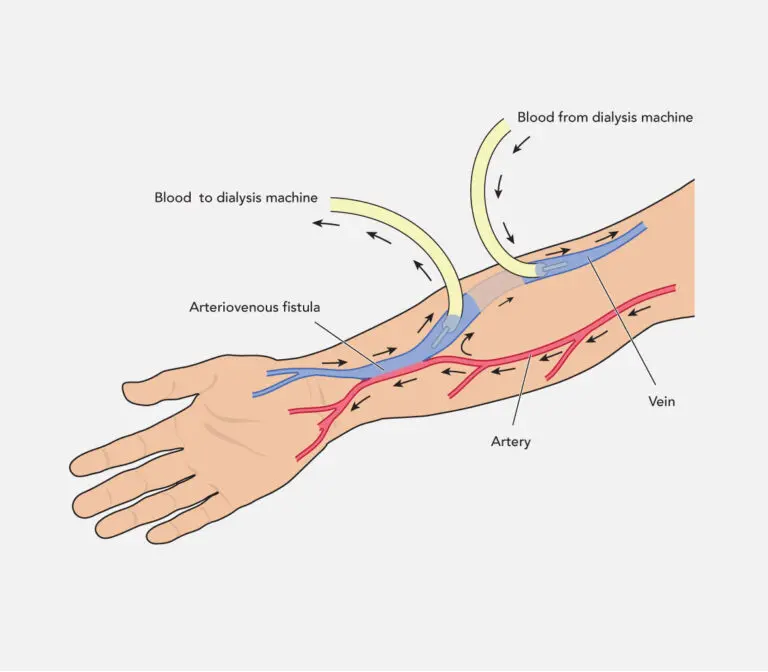AVF (Arteriovenous Fistula)
Understanding Causes, Symptoms, and Treatment Options

What is AVF?
Arteriovenous Fistula (AVF) is an abnormal connection between an artery and a vein. This bypasses the capillary system, leading to altered blood flow and increased pressure in the veins. AVFs can be congenital or acquired and may develop in various parts of the body, such as the brain, extremities, or abdomen. While some AVFs are asymptomatic, others can cause significant health complications.
Key Features of AVF
- Direct connection between an artery and a vein
- Bypasses the capillary system, disrupting normal blood flow
- Can cause increased workload on the heart
- May lead to swelling, pain, or skin changes near the site
Symptoms of AVF
Symptoms depend on the size and location of the AVF. Common symptoms include:
- Swelling or pain near the affected area
- Pulsating or visibly enlarged veins
- Warm skin over the AVF site
- Fatigue or weakness in the affected limb
- Neurological symptoms, such as headaches or vision changes, if located in the brain
- Heart failure symptoms in severe cases
Causes and Risk Factors
AVFs can develop due to various factors:
- Congenital: Present at birth due to developmental abnormalities
- Trauma: Injuries causing direct damage to blood vessels
- Surgical Procedures: Intentionally created AVFs for dialysis access
- Infections: Rarely, infections can lead to AVF formation
- Spontaneous: Sometimes, AVFs form without a known cause
How is AVF Diagnosed and Treated?
Diagnosis involves a combination of medical history, physical examination, and imaging:
- Ultrasound: Non-invasive imaging to detect abnormal blood flow
- CT or MRI: Provides detailed images of the AVF and surrounding structures
- Angiography: Uses contrast dye to map the blood vessels and the AVF
Treatment options depend on the AVF’s size, location, and symptoms:
- Observation: Small, asymptomatic AVFs may only require monitoring.
- Endovascular Embolization: A minimally invasive procedure where a catheter is used to block the AVF with coils or glue.
- Surgical Repair: Open surgery to disconnect the abnormal connection.
- Compression Therapy: For small, superficial AVFs, compression may encourage closure.
Risks and Potential Complications
If untreated, AVFs can lead to complications, such as:
- Heart Failure: Increased blood flow can strain the heart
- Skin Ulcers: Chronic high pressure can damage the skin
- Bleeding: Risk of rupture in superficial AVFs
- Neurological Symptoms: If located in the brain, may cause seizures or stroke-like symptoms
Recovery and Long-Term Management
Steps to manage AVF and reduce recurrence include:
- Regular follow-ups to monitor for recurrence or complications
- Adhering to prescribed treatments, such as medications or therapy
- Maintaining a healthy lifestyle to reduce cardiovascular strain
- Seeking prompt medical attention for new or worsening symptoms
With proper treatment and monitoring, many patients experience significant symptom relief and improved quality of life.